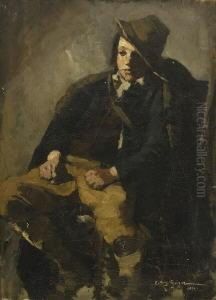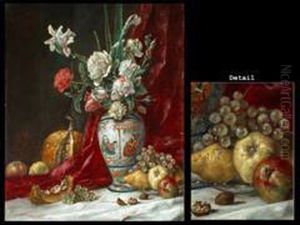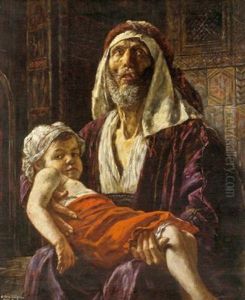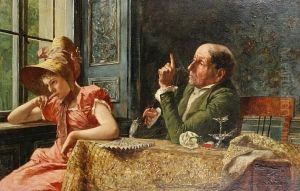Caspar Augustin Geiger Paintings
Caspar Augustin Geiger was a German painter born in 1720, primarily known for his work as a fresco painter during the late Baroque and early Rococo periods. Although not as widely renowned as some of his contemporaries, he contributed notably to the artistic landscape of his time, particularly in southern Germany.
Geiger's early life and training are not thoroughly documented, but it is known that he was active during a period when fresco painting was a significant aspect of church and secular building decoration. He would have been trained in the techniques of creating large-scale murals, which involved applying pigment onto freshly laid lime plaster, a process allowing the artwork to become an integral part of the wall.
The Baroque period was characterized by dramatic intensity, grandeur, and a vivid sense of movement—all elements that Geiger would have incorporated into his work. As the Rococo style emerged, it brought with it a lighter, more playful aesthetic, which also influenced Geiger's artistic development. His work would have exhibited the transition between these two styles, balancing the grandiosity of Baroque with the elegance and whimsy of Rococo.
Geiger's career unfolded in a time and place rich with artistic production, and he would have been part of a community of artists, craftsmen, and patrons involved in the creation of ecclesiastical and secular art. His frescoes would have adorned the walls and ceilings of churches, chapels, and possibly the homes of wealthy patrons, though specific works attributed to him are not well-known in the art historical record.
By the time of Geiger's death in 1795, the artistic styles had shifted towards Neoclassicism, which looked to the art and culture of Ancient Greece and Rome for inspiration, and away from the ornate qualities of Baroque and Rococo. However, artists like Geiger helped to define the visual culture of their time, leaving a legacy that would influence generations of fresco painters and decorators.
The lack of extensive records on Geiger's life and works means that his influence is not as prominent in art history as that of his peers. Nevertheless, he remains a part of the rich tapestry of 18th-century European art, contributing to the period's stylistic and cultural dialogues through his fresco paintings and decorative work.



